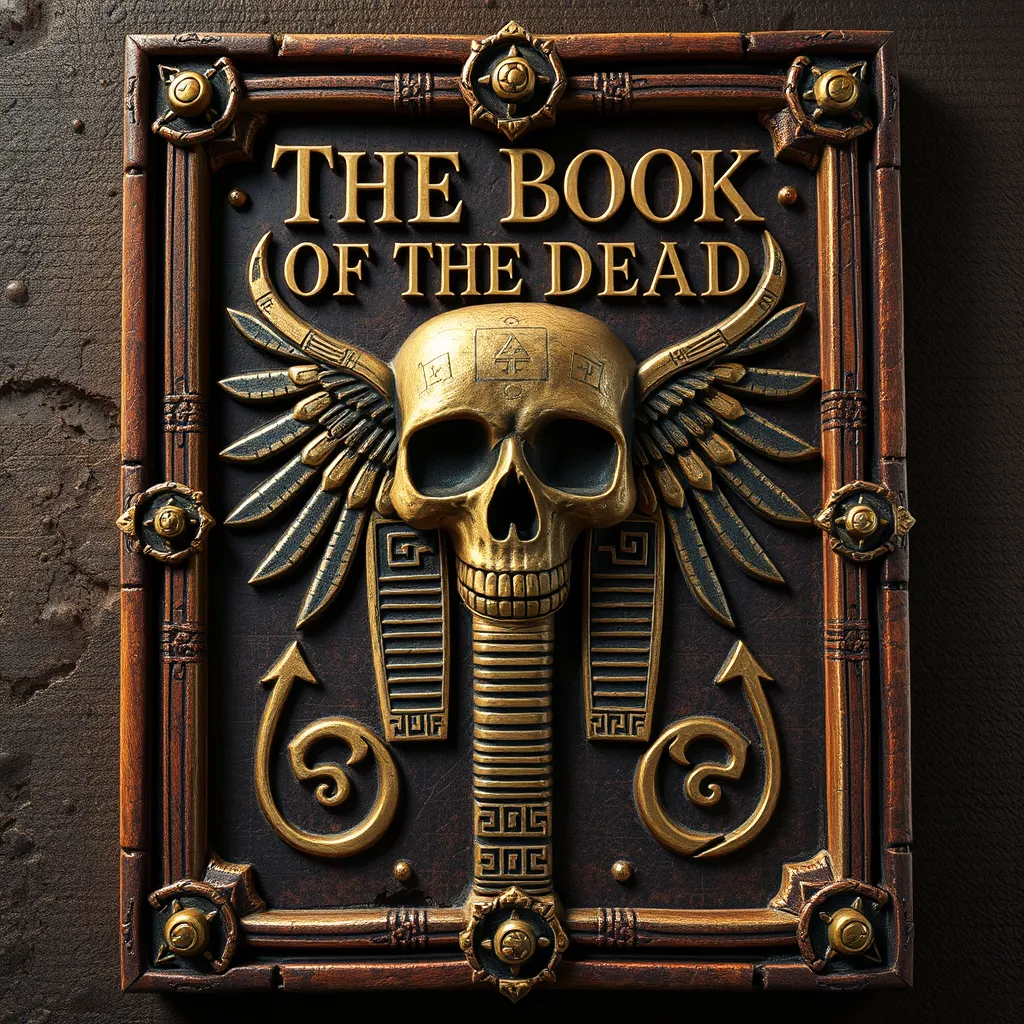The Book of the Dead: Spells & Formulas
I. Introduction to The Book of the Dead
The Book of the Dead, known as “The Book of Coming Forth by Day,” is a collection of ancient Egyptian funerary texts that served as a guide for the deceased in the afterlife. It holds a significant place in the annals of ancient Egyptian culture, providing insight into their beliefs about death and the afterlife.
Historically, The Book of the Dead emerged during the New Kingdom period of ancient Egypt, around 1550 BCE, and continued to evolve until the Roman period. It was designed to assist the deceased in navigating the challenges of the underworld and achieving a successful rebirth. The spells and formulas contained within the text were believed to possess magical properties, ensuring protection and guidance for the soul on its journey.
II. Historical Background
The origins of The Book of the Dead can be traced back to earlier funerary texts, such as the Pyramid Texts and Coffin Texts, which were inscribed in royal tombs and later in coffins of the elite. These early texts laid the groundwork for the development of The Book of the Dead, which became more accessible to the general populace during the New Kingdom.
Key periods in ancient Egyptian history relevant to the text include:
- The Old Kingdom (c. 2686–2181 BCE) – Emergence of pyramid construction and early funerary texts.
- The Middle Kingdom (c. 2055–1650 BCE) – Development of coffin texts that influenced later writings.
- The New Kingdom (c. 1550–1070 BCE) – The Book of the Dead becomes widely used among the elite and commoners.
Throughout these periods, funerary practices evolved, reflecting changes in beliefs about death and the afterlife. The Book of the Dead encapsulated these beliefs, offering a comprehensive guide for navigating the afterlife.
III. Structure and Composition
The Book of the Dead is not a single, uniform text but rather a compilation of spells, hymns, and prayers, each serving a unique purpose in the afterlife journey. The text is typically organized into chapters, with each chapter addressing specific challenges the deceased might face.
Types of spells and formulas included in The Book of the Dead are:
- Spells for protection against harmful spirits.
- Spells for guidance through the underworld.
- Spells for resurrection and rebirth.
Variations in different versions of The Book of the Dead exist, as individual families would customize the spells according to personal beliefs and needs. This personalization reflects the unique relationships between the living and the deceased.
IV. Major Themes and Concepts
The major themes within The Book of the Dead revolve around the afterlife and the journey of the soul. One of the central concepts is the idea of judgment, where the soul faces the weighing of the heart against the feather of Ma’at, the goddess of truth and justice.
Key concepts include:
- The afterlife as a continuation of life on earth.
- The role of Osiris, the god of the afterlife, in guiding and judging the souls.
- The importance of names and inscriptions, which were believed to grant the deceased power and identity in the afterlife.
V. Key Spells and Their Functions
Among the many spells in The Book of the Dead, Spell 125, known as “The Weighing of the Heart,” is one of the most significant. This spell describes the process where the deceased’s heart is weighed against the feather of Ma’at to determine their worthiness for entering the afterlife.
Other notable spells include:
- Spell 1 – Protection from venomous creatures.
- Spell 30B – The spell for the resurrection of the deceased.
- Spell 19 – A charm for the deceased to speak and act freely in the afterlife.
These spells serve various functions such as protection, guidance, and resurrection, highlighting the importance of personalizing them for the deceased to ensure their successful journey in the afterlife.
VI. Rituals Associated with The Book of the Dead
Funerary rituals were intricately connected to the spells of The Book of the Dead. These rituals often involved elaborate ceremonies conducted by priests and family members designed to honor the deceased and ensure their safe passage to the afterlife.
The roles of priests and family members included:
- Performing rituals to invoke the spells contained within the text.
- Offering food, drink, and other items to sustain the deceased in the afterlife.
- Reciting prayers and spells at the tomb to assist the deceased’s journey.
Physical objects and artifacts, such as amulets and statues, were also vital in these rituals, serving as protective measures and symbols of the deceased’s identity in the afterlife.
VII. The Legacy of The Book of the Dead
The Book of the Dead has left a profound influence on later religious texts and beliefs, shaping the understanding of the afterlife in various cultures. Its themes and concepts resonate through various spiritual traditions, illustrating a universal human concern with mortality and the afterlife.
In modern interpretations of ancient Egyptian spirituality, The Book of the Dead continues to be a source of fascination. Scholars study the text to gain insights into the spiritual practices and beliefs of ancient Egyptians, revealing their complexities and richness.
Preservation and study of The Book of the Dead in contemporary scholarship involve ongoing research, translations, and exhibitions that celebrate its historical significance and cultural impact.
VIII. Conclusion
In summary, The Book of the Dead is a vital artifact of ancient Egyptian culture, reflecting their profound beliefs about life, death, and the afterlife. Its spells and formulas served essential purposes in guiding the deceased on their journey, revealing the intricate relationship between the living and the dead.
The enduring legacy of The Book of the Dead encourages further exploration of ancient Egyptian texts and beliefs, inviting modern individuals to engage with the spiritual wisdom of a civilization that continues to captivate the human imagination.




